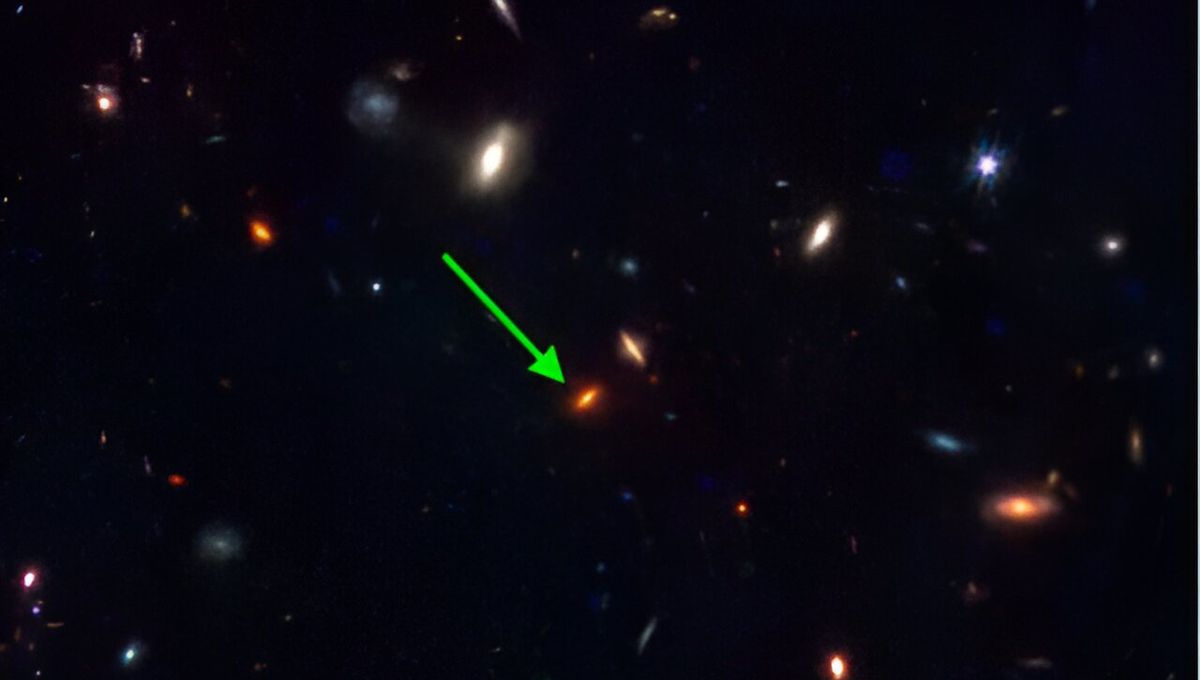
Looking at objects far away in the universe is like looking back in time, a very useful consequence of the finiteness of the speed of light. Very distant objects are therefore very young objects, as they were when the universe was also young. Imagine the surprise, then, of astronomers who found a very distant galaxy that was looking pretty old.
It is known as ZF-UDS-7329. Observations revealed that the galaxy’s light comes from 11.5 billion years ago and its massive stellar population was already in place 13 billion years ago. The mass of all the stars in that galaxy is at least twice that of the stars in our galaxy, the Milky Way. And our galaxy has taken billions of years to get this big. How a galaxy got so big in just several hundred million years is a mystery.
“We are now going beyond what was possible to confirm the oldest massive quiescent monsters that exist deep in the universe. This pushes the boundaries of our current understanding of how galaxies form and evolve. The key question now is how they form so fast very early in the universe, and what mysterious mechanisms lead to stopping them forming stars abruptly when the rest of the universe [is] doing so,” co-author Dr Themiya Nanayakkara from Swinburne University of Technology said in a statement.
The galaxy was first identified years ago but the truly unusual properties couldn’t be captured by ground-based observatories. It was only with the keen eye of JWST that astronomers could get a proper handle on it. Being in space, it is not affected by the limitations imposed by our atmosphere.
“We’ve been chasing this particular galaxy for seven years and spent hours observing it with the two largest telescopes on earth to figure out how old it was. But it was too red and too faint, and we couldn’t measure it. In the end, we had to go off Earth and use the JWST to confirm its nature,” lead author Professor Karl Glazebrook, also from Swinburne, added.
“This was very much a team effort, from the infrared sky surveys we started in 2010 that led to us identifying this galaxy as unusual, to our many hours on the Keck and Very Large Telescope where we tried, but failed to confirm it, until finally the last year where we spent enormous effort figuring out how to process the JWST data and analyze this spectrum.”
While this is a single object, the results combined with other unusual discoveries continue to point out more complexity in the early universe than previously thought. It could be related to how dark matter assembles. Galaxies form in the gravitational wells of those primordial dark matter halos. Or, it could be that there are processes in galaxy evolution that we are yet to grasp.
“Galaxy formation is in large part dictated by how dark matter concentrates,” Associate Professor Claudia Lagos of the University of Western Australia said. “Having these extremely massive galaxies so early in the universe is posing significant challenges to our standard model of cosmology. This is because we don’t think such massive dark matter structures as to host these massive galaxies have had time yet to form.”
“More observations are needed to understand how common these galaxies may be and to help us understand how truly massive these galaxies are.”
The study is published in Nature.
Source Link: JWST Discovers Another “Beyond Possible” Galaxy And We Have To Rethink Everything